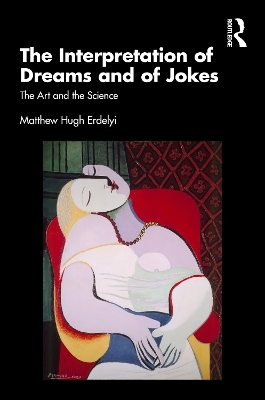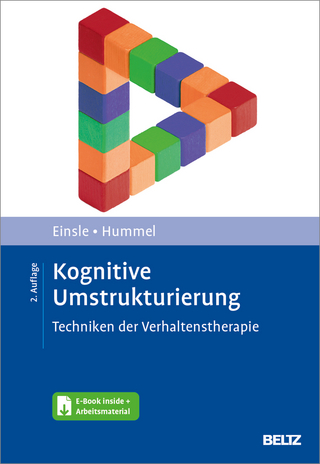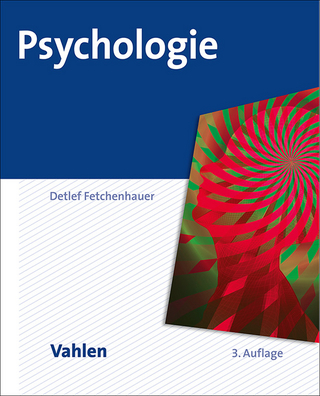
The Interpretation of Dreams and of Jokes
Routledge (Verlag)
978-1-032-29222-9 (ISBN)
Bringing together extensive research from cognitive psychology, neuroscience and psychoanalysis, the book provides a balanced approach to dream science that is underpinned by experimental and theoretical research. It considers the significance of dreams and their relationships to jokes, examining how both require an understanding of latent content in which context and individual differences play a large part. The book outlines a history of dream research and dream science and includes several original dream extracts for discussion. The book’s chapters explore how we can interpret meaning in dreams, how dreams might be indicators of inner psychological and somatic states, whether dreams can be used in problem-solving and the relationship between dreams and aphasia, memory and waking consciousness.
This groundbreaking book will be essential reading for researchers and students from psychological and psychoanalytic backgrounds who are interested in the analysis and science of dreams.
BRIEF INTRODUCTION
I. HISTORICAL FORESHADOWINGS
4,000 Years Ago: The Dream of Dumuzi and the Interpretation of Geshitinanna
Cro-Magnon Cave Painting of a Dream: Jouvet’s Interpretation
Semantic Depth: Manifest vs. Latent Content
Repression of Dreams
Dreams in Religion, Philosophy, Medicine, and War
Bias in Interpretation
Behaviorism and the Eclipse of Dreams in Modern Psychology
Conditioning and Instinctive Drift
Dreams and Darwin
Helmholtz’s "Unconscious Inferences":
Cognitive Psychology’s Neglect of Dreams
Memory and Dreams
II. FREUD’S INTERPRETATION OF DREAMS AND HIS TREATEMENT OF JOKES: BREAKTHROUGHS, ERRORS, REVISIONS
Freud’s Transition from Neuroscience to Psychology
Dreams as Just One Dialect from a Family of Release Phenomena
Aphasia and Dreams
Dreams as the Royal Road to the Knowledge of the Unconscious
The Manifest-Latent Content Distinction and the Dream-Work
The "Dream-Work" as Sub-Work
Formalization of the Manifest-Latent Content Distinction: m ≠ m × context
Outright Errors in Freud’s Dream Theory
Jokes
III. SAMPLES OF DREAMS AND OTHER RELEASE PHENOMENA, WITH INTERPRETATIONS AND COMMENTARIES
Freud’s Standard Approach to Interpreting Dreams and other Release Phenomena
Freud’s Interpretation of a Freudian Slip: The Fugitive Aliquis
The Irma Dream and its Analysis (Sigmund Freud)
The Picture Dream of Dolores P. (Matthew Erdelyi)
The Elephant Dream of Alice V. (John Nemiah)
Allan Hobson’s "Mozart at the Museum" Dream
Zelda’s Dream: "Worst Case Scenario"
Freud Dreams Chinese Poetry: 弗 梦 汉 诗 (Diane M. Zizak)
Problem-Solving Dreams (Deirdre Barrett)
Dream-Like Cognition in Schizophrenia
Theoretical Cautions on the Overlap between Dreams and Schizophrenia
CHAPTER IV. NEUROSCIENCE FOUNDATIONS OF DREAMING
REM Sleep: REM’s, Short-Wave EEG’s, Motor Inhibition, Genital Arousal--and Dreams
The Unravelling of the REM = Dreaming Consensus
Double-Dissociation between the REM State and Dreaming (Mark Solms)
Hobson’s Revision of the Activation-Synthesis Hypothesis: The "AIM" Model
The "Hot Zone" of Dreaming (Giulio Tononi, Francesca Siclari, et al.)
Form vs. Content: Hobson’s "Formalistic" Theory and the Question of Dream Meaning
Dreams as Paradoxical States of Simultaneous Activation and Deactivation
Complications with the "Frontality" Notion
Complications with the "Limbic System" (Does it Even Exist?--Joseph LeDoux)
The Neural Default Network: Mind-Wandering, Fantasy, Daydreams, Dreams
Release Phenomena: Meaning and Implications
V. QUANTITATIVE CONTENT-ANALYSIS
Quantitative vs. Qualitative Analysis
Recovery of Subliminal Stimuli in Dreams, Daydreams, and Fantasy
Signal Detection Theory (SDT) and Fantasy: ROC Curves, d′, and β
Quantitative Content-Analysis in Literary Criticism
Quantitative Content-Analysis of Dreams (Hall, Van De Castle, Domhoff,
Problems with Modern Quantitative-Analytic Approaches to Dreams
The Continuity Hypothesis (Freud, Jung, Calkins, Hall, Domhoff, Schredl, Bulkeley, Erdelyi, Jenkins)
Application of Signal Detection Theory to Dream Recall (Erdelyi et al.)
VI. DREAMING AS NOISY REMEMBERING
Incorporation of Awake Experiences in Dreams over Time (Freud, Jouvet, Nielsen, Blagrove, Brugger)
Hypermnesic Dreams
Dreams as Leading, Lagging, and Concurrent Indicators
The Associative Structure of Memory and Resulting "Spheres of Meaning"
Freudian Distortions are the Same as Bartlettian Distortions but for Motive:
Repeated Long-Distance Recalls of the "War of the Ghosts": Interpretations and Quantitative Content-Analyses
VII. OVERVIEW AND CONCLUSIONS
Dreams Have Meaning, and at More than one Level
Context is the Key to Latent Contents
Formalization of the Manifest-Latent Content Distinction: m ≠ m × context
Dynamics: Weighting of Items in the Contextual Ecology
Interpretation is Probabilistic
Symbolism
Distortions—Bartlettian and Freudian: Implications for the Dream-Work Notion
Dreams are Hypermnesic (Sometimes)
Dreams as Leading, Lagging, and Concurrent Indicators
The Continuity between Dream-Life and Awake-Life
Dreams are One Dialect from a Family of Release-Phenomena
Associative Structure Undergirds Meaning—as well as Errors and Biases
The Essential Fact about Dreams: They are Confusing but Honest
APPENDIX
Application of Signal Detection Theory to Narrative Recall, Including Dreams:
Classic Signal-Detection Theory, ROC Functions, d', P(A), and H│Fc
Application of Classic SDT Notions to Recall: From ROC to roc Functions and Conditionalized Hits (H|Fc)
Achieving the Target False-Alarm Level, Fc: Paring-Down Narrative Recall Texts
Implementing the CCFR Procedure: Illustration of the Computation of H|Fc
Empirical Validation of the CCFR
Alternatives to the H|Fc Index of Criterion-Controlled Free Recall
REFERENCES
| Erscheinungsdatum | 06.08.2022 |
|---|---|
| Zusatzinfo | 9 Tables, black and white; 31 Line drawings, black and white; 9 Halftones, black and white; 40 Illustrations, black and white |
| Verlagsort | London |
| Sprache | englisch |
| Maße | 156 x 234 mm |
| Gewicht | 480 g |
| Themenwelt | Geisteswissenschaften ► Psychologie ► Allgemeine Psychologie |
| Geisteswissenschaften ► Psychologie ► Biopsychologie / Neurowissenschaften | |
| Geisteswissenschaften ► Psychologie ► Psychoanalyse / Tiefenpsychologie | |
| Geisteswissenschaften ► Psychologie ► Verhaltenstherapie | |
| Medizin / Pharmazie ► Medizinische Fachgebiete ► Psychiatrie / Psychotherapie | |
| ISBN-10 | 1-032-29222-9 / 1032292229 |
| ISBN-13 | 978-1-032-29222-9 / 9781032292229 |
| Zustand | Neuware |
| Informationen gemäß Produktsicherheitsverordnung (GPSR) | |
| Haben Sie eine Frage zum Produkt? |
aus dem Bereich


